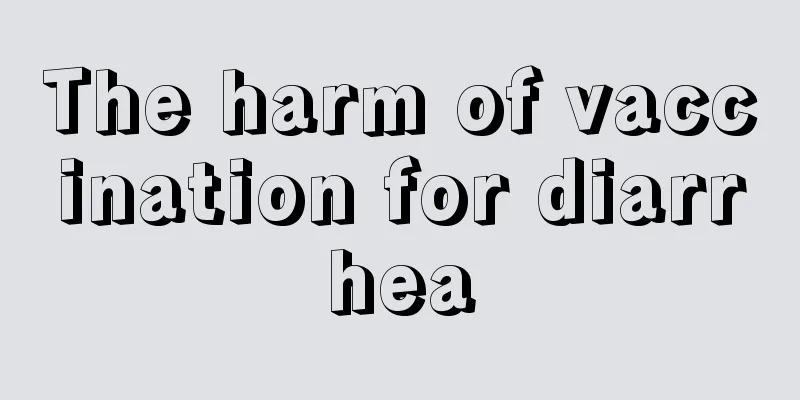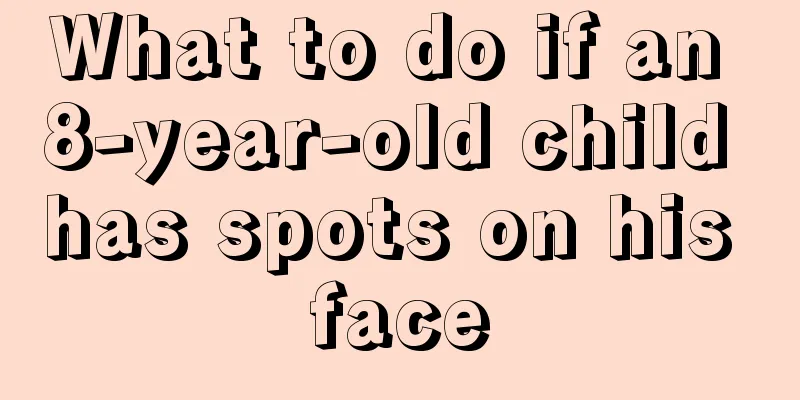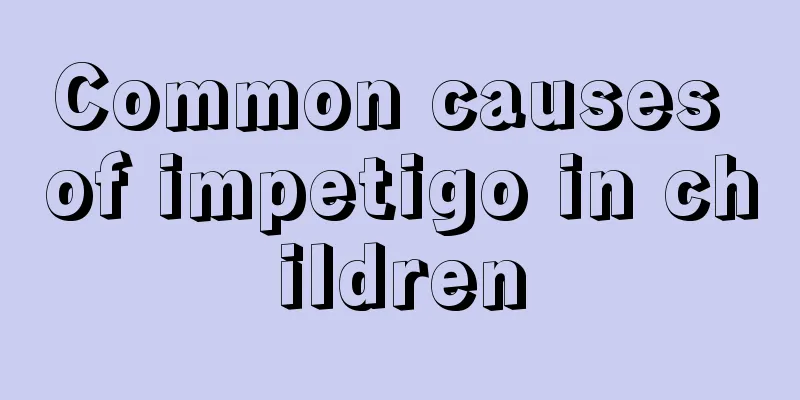What to do if your baby only has a runny nose

|
Some babies have weak physical resistance and will develop cold symptoms once they encounter cold wind. You should pay attention to this. It is not a good situation for babies to always have a runny nose. You should take your child for examination in time, because if the baby always has a runny nose, it will easily lead to breathing difficulties and allergic rhinitis. You should alleviate the phenomenon of the baby's runny nose. You can refer to the content of the article for the treatment of baby's runny nose. Baby runny nose When a baby has a runny nose, it can easily lead to breathing difficulties, which is very dangerous. In order to properly deal with the symptoms of baby's runny nose, mothers must first understand the reasons for the baby's runny nose. 1. Runny nose caused by cold . Rhinitis caused by a cold is called acute rhinitis. At this time, the nasal mucosa is congested and swollen, and the increased glandular secretion forms nasal mucus. It starts as clear water, and gradually becomes purulent after 3-5 days, and then gradually heals. 2. Allergic rhinitis . Often have clear runny nose accompanied by nasal congestion, itchy nose, sneezing and other symptoms, especially after getting up in the morning, get out of the warm bed, immediately sneeze continuously, followed by clear runny nose, you need to be alert to whether the baby has allergic rhinitis. Bronchial asthma is accompanied by runny nose, so mothers should pay attention to whether their babies suffer from allergic rhinitis. 3. There is foreign object in the nasal cavity. If one side of the baby's nose has a foul odor, purulent mucus, and sometimes blood in the mucus, you need to consider whether there is a foreign object in the nasal cavity. This situation often occurs in children around 3 years old. When playing, they often put paper, beans, and other foreign objects into their nasal cavity out of curiosity. Once they are inserted, they cannot be taken out, which produces a bad smell. However, small metal parts and buttons inserted into the nasal cavity may not necessarily cause a bad smell. 4. Acute and chronic rhinitis. When babies develop sinusitis due to acute or chronic rhinitis, they often have a lot of nasal mucus, which seems to "never stop", and is sometimes accompanied by headaches. 5. Nasal polyps . Some babies only have runny nose on one side, but cannot blow it out, their nostrils are blocked, and they snore when they sleep. In this case, you should be alert to the presence of nasal polyps. How to relieve baby's runny nose When the baby has a runny nose, mothers will naturally pick up a tissue or handkerchief to wipe it off. But if you wipe it too many times, you will find that the baby's skin is also worn out. But seeing their babies in pain, mothers are really at a loss as to what to do. When your baby has a runny nose, mothers can try the following methods to relieve it. 1. Hot compress: Use a hot and wet towel to apply hot compress on the baby's nose. As the nasal mucosa shrinks when exposed to heat, the nasal cavity becomes more unobstructed and the sticky mucus becomes easier to hydrate and flow out. Be gentle when applying hot compress. If you find mucus in your baby's nostrils, you can first clean it with a cotton swab dipped in water; you can also slowly massage the baby's nose or both sides of the nose. 2. Facial steamer: Point the facial steamer at the baby’s face to allow him to be exposed to moisture and heat. Steam can moisten your baby's nasal cavity and drain a lot of mucus quickly and naturally. When using the facial steamer, do not place it too close to the baby to avoid hurting his delicate skin; and the time of use at one time should not be too long, about 3 minutes is enough. 3. Nasal aspirator : When the baby's nose has a lot of secretions and a heavy nasal sound, the mother can use a nasal aspirator. When using it, be careful to press the other nostril at the same time when aspirating one nostril, the effect will be better. In addition, the nasal aspirator can absorb a large amount of nasal mucus and secretions at one time. Before use, it is recommended that parents check whether there is any nasal mucus in the baby's nasal cavity. Keep the action gentle to avoid going too deep into the baby's nasal cavity to cause pain or injury. Clean it thoroughly after use. 4. Essential oil hot compress: Drop some essential oil on a hot towel or handkerchief and apply it on the baby's nose; or use essential oil spray and spray it in the air. 5. Breast milk drops : The mother drops the expressed breast milk into the baby's nostrils. The typical vaginal discharge of Trichomonas vaginitis is yellow or yellow-green. |
<<: Baby sneezes and has a runny nose in summer
>>: How to treat congenital astigmatism in children
Recommend
Children's phlegm-resolving and cough-relieving granules
Our parents nowadays attach great importance to t...
How to treat drooling in cerebral palsy
Children with cerebral palsy often drool. Parents...
What can children eat to get better quickly when they have internal heat?
The weather is hot in the summer, and babies are ...
How much milk powder does a child eat in a month
Although the best nutrition for children comes fr...
What's wrong with the child's poop?
The health of children is very important, especia...
8 great tips to cultivate a new good boy
1. Give your son kisses and hugs Don't think ...
What to do if your baby has teething
Teething is an important milestone in a baby'...
5-year-old baby has white spots on his face
If a five-year-old baby has white spots on his fa...
What is the best way to treat children's ADHD?
Children with ADHD are a concern for many parents...
How to treat chickenpox in children
Children are the people with the highest status i...
How to deal with milk allergy in newborns
In life, newborns have all kinds of problems, and...
What is the soft bump on the one-year-old baby's head?
As the baby grows, his body will gradually grow o...
What is the cause of baby teeth overbite?
There are many common dental problems. When solvi...
Treatment for vomiting in two-month-old babies
Vomiting in two-month-old babies makes our parent...
What is the situation of baby's hair sweating easily?
Some mothers of babies see that their baby's ...









